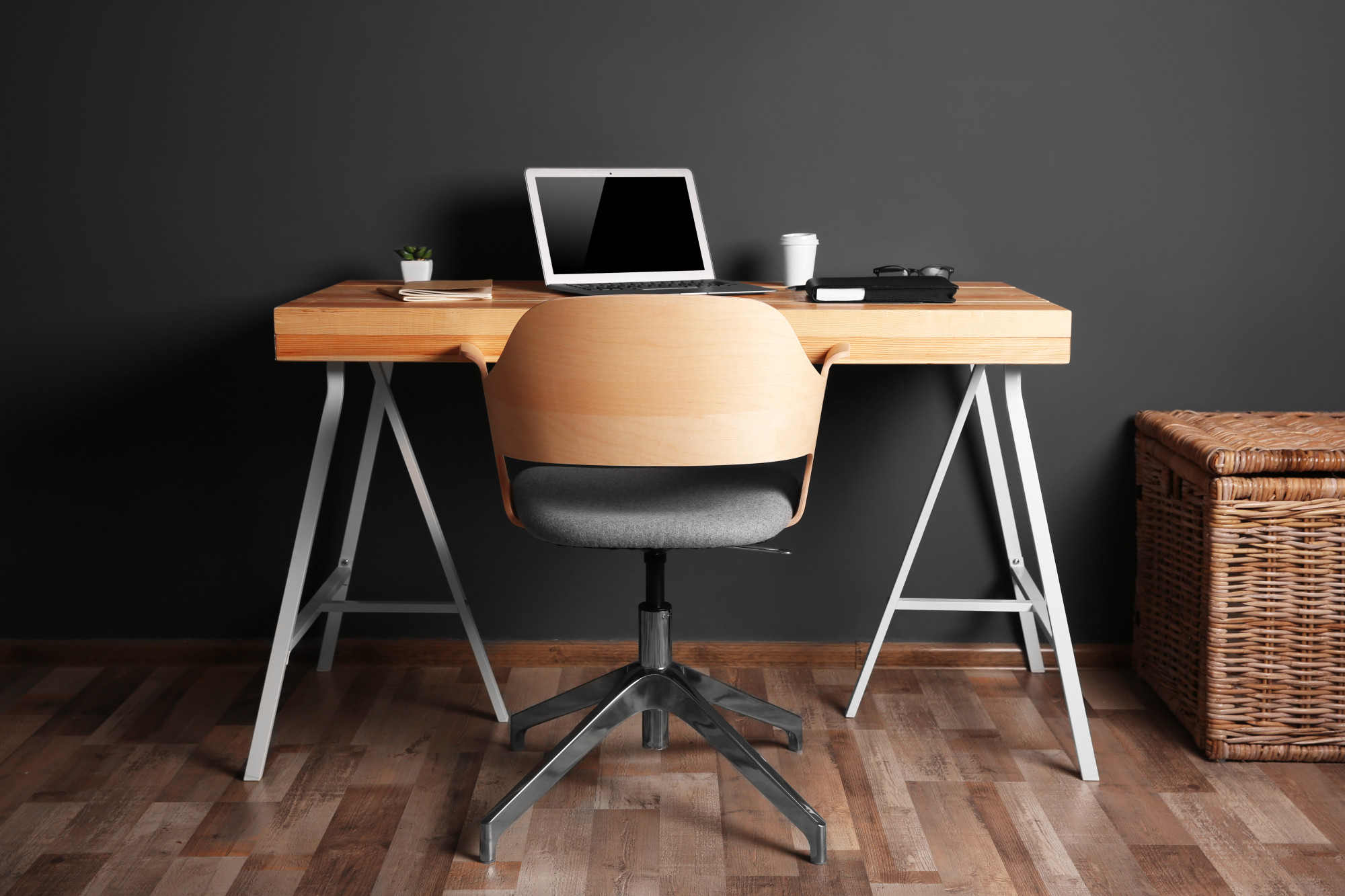
When you work from home, it can be tricky to separate your living space from your working space. Creating a home office is a great first step in making sure you can tune into a working mindset when you have things to do, and back into a relaxed state when it’s time to spend time with family or de-stress. Designing your home office can be as big a project as you want, and the energy you put into it can help you be more productive and professional. Depending on the nature of your work, organizing your desk area, incorporating shelving and storage, and making the space inspirational are all important in varying degrees. It’s good to experiment to see what works best for you and suits your personal needs, but there are a few constants that hold true for almost all home offices and working spaces.
1. Create a focused space.
Make sure your office or work room is clearly designated as a space different from all others in your home. Ensure you have a door or curtain that can shut and as much as possible avoid storing cleaning supplies, old clothes, or other clutter in your work space. Not only will it distract you and remind you of other responsibilities, but it can make it harder to find important documents and tools if they’re sharing space with shoes, bottles or boxes. If you have too much junk that you need to get rid off, get in touch with a waste removal company such as Kwik Sweep.
2. Separate work from life.
Treat a home office like you would a cubicle in a busy office building. Keep it tidy, have a family photo or two, and decorate it in a simple, professional way. Your office might be at home, but the more you treat it as separate, the easier it will be to tune in when there’s work to do, and to decompress when you’re finished. Stock your office with everything you might need to avoid having to leave and grab something, which can take you out of your productive state and introduce all sorts of distractions.
3. Use soothing colors and decorations.
Working buildings and professional spaces often put a lot of effort into furnishings that promote productivity. Clean lines and neutral colours reduce distractions and can have distinct psychological effects. The colour blue acts as a relaxant, as well as an appetite suppressant, so consider painting the room a shade of blue or using blue furnishings. Keeping the space cool can promote brain function and focus, so make sure you can control the room’s temperature. Comfortable ergonomic chairs and desks reduce fatigue and long term damage like back problems and carpal tunnel syndrome. Incorporate as many of these as you can to help you be more productive, and promote well being.
4. Incorporate tools for focus.
A home office doesn’t need to feel like a jail cell, so using design elements like fountains, zen gardens, or executive toys can help break up the monotony without throwing your focus. A simple indoor fountain can help freshen the space up, and the sounds of running water not only relaxes, but it can act as white noise to drown out the sounds you might expect if you have kids, neighbours, or heavy traffic near your house.


